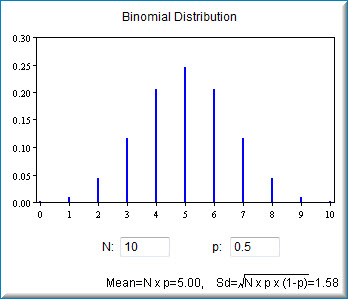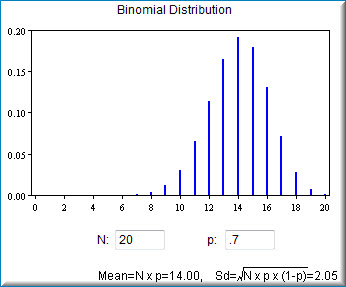Illustrated Instructions
The screenshot below shows the binomial demonstration with its default data. You can adjust the
number of trials (N) as well as the proportion of successes (p).

The example below shows a distribution of 20 trials with a probability of success of .7. Notice that the mean and standard deviation for the distribution are also shown.

The graph will adjust to the entered number of trials (N) and probability of success (P).